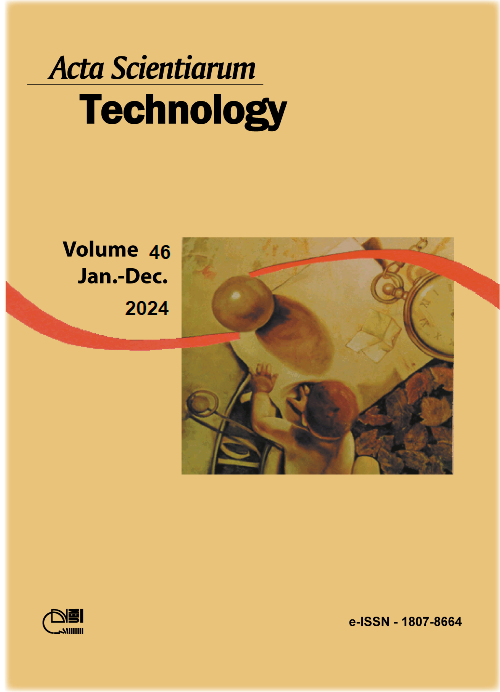Evaluation of representativeness of elasticity modulus and apparent density of D20 strength class of Brazilian standard in timber structures design
DOI:
https://doi.org/10.4025/actascitechnol.v46i1.60183Palavras-chave:
wood; hardwood; strength classes; stiffness; apparent density.Resumo
The Brazilian code ABNT NBR 7190-1 (2022) presents different strength classes for hardwood and displays representative values for apparent density, compressive strength parallel to the grain and modulus of elasticity in parallel direction of fibers to help designers for an appropriate timber structure design. This research evaluated to check if the representative value of modulus of elasticity in parallel direction of fibers and apparent density of D20 strength class (native wood species) still represent a secure value for designers. Also, it was checked the possibility to estimate compressive strength parallel to the grain and modulus of elasticity in parallel direction of fibers as function of apparent density using regression models, aided by the analysis of variance. The results showed that the representative value of modulus of elasticity in parallel direction of fibers and apparent density for D20 is close to the obtained in the present research. The analysis of variance indicated the impossibility to estimate strength and stiffness properties as function of apparent density.
Downloads
Downloads
Publicado
Como Citar
Edição
Seção
Licença
DECLARAÇíO DE ORIGINALIDADE E DIREITOS AUTORAIS
Declaro que o presente artigo é original, não tendo sido submetido í publicação em qualquer outro periódico nacional ou internacional, quer seja em parte ou em sua totalidade.
Os direitos autorais pertencem exclusivamente aos autores. Os direitos de licenciamento utilizados pelo periódico é a licença Creative Commons Attribution 4.0 (CC BY 4.0): são permitidos o compartilhamento (cópia e distribuição do material em qualqer meio ou formato) e adaptação (remix, transformação e criação de material a partir do conteúdo assim licenciado para quaisquer fins, inclusive comerciais.
Recomenda-se a leitura desse link para maiores informações sobre o tema: fornecimento de créditos e referências de forma correta, entre outros detalhes cruciais para uso adequado do material licenciado.















